Withlacoochee River System Update - 12/1/2020
Southwest Florida Water Management District sent this bulletin at 12/01/2020 04:33 PM ESTNovember Rainfall Keeps Water Levels Up
Rainfall:
- Winter is certainly in the air this week as we prepare for freezing temperatures overnight tonight.
- Periods of cooler weather and minimal rainfall are signs that the seasons are changing here in Florida.
- That’s a welcome sight for many of us who thought this year’s hurricane season would never end.
- Our region received about 2.9 inches of rainfall in November, higher than the historical average (1.9 inches) for that month.
- So far this year (January through November), we’ve received about 46 inches of rain, 5 inches less than the historical average for that period.
- Aquifer (groundwater) conditions for our region is currently in the 63th percentile; higher than average for this time of year.
- Many of our region’s ditches, swamps and low areas are still holding water, which indicates we remain in a long-term wet cycle with no drought in sight.
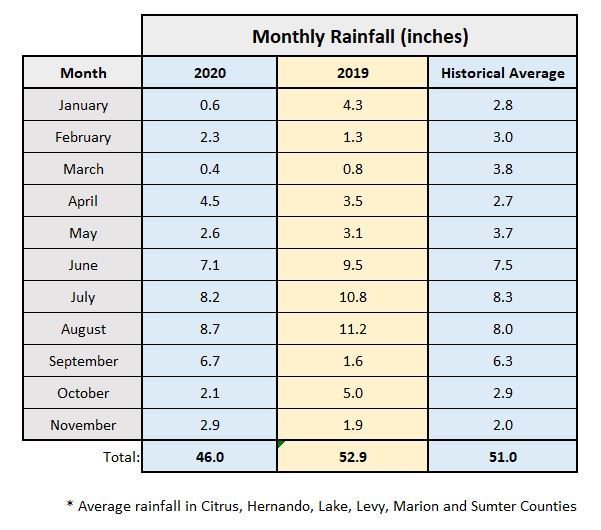
A Rainy Day in Flying Eagle Swamp (November 2020)
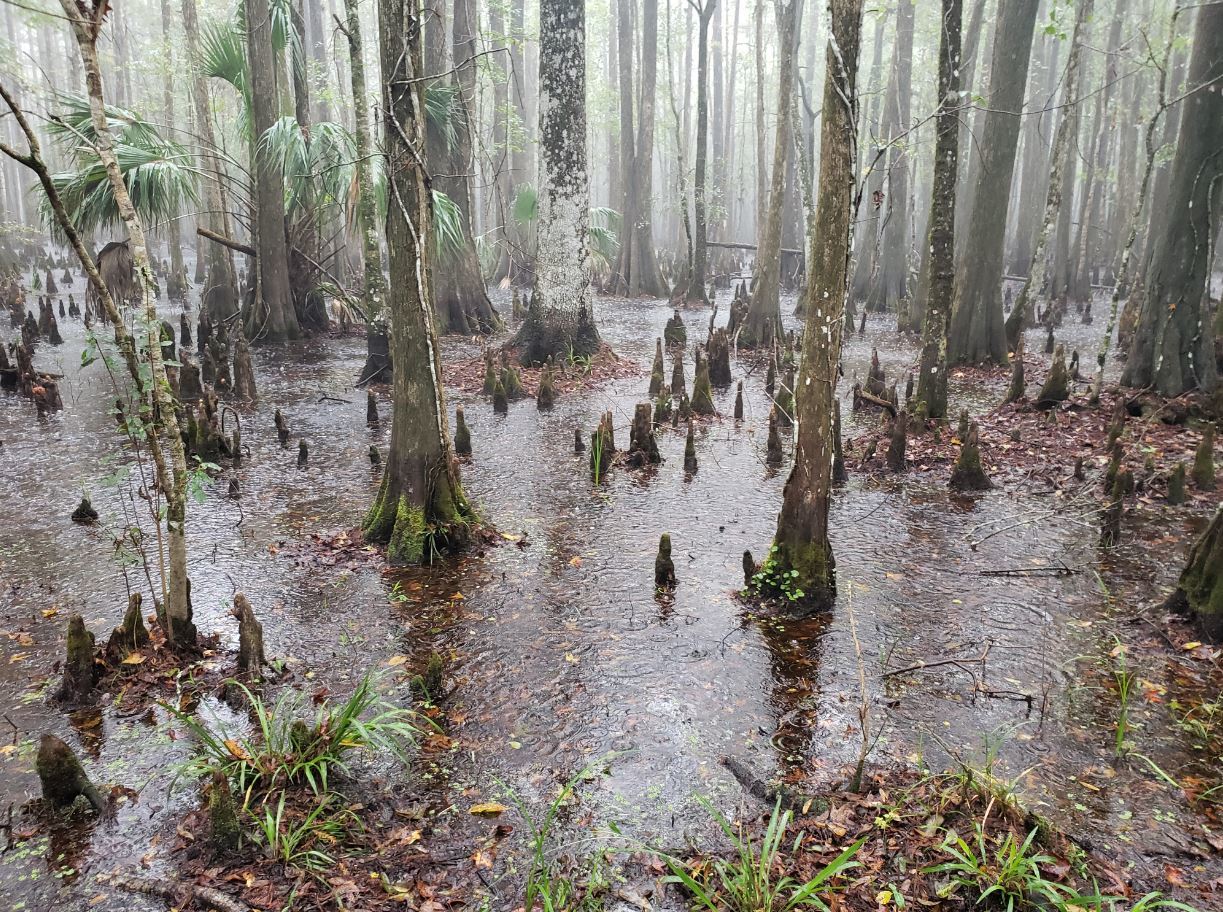
Withlacoochee River (from the Green Swamp downstream past Hwy 200):
- Water levels and flows along most of the Withlacoochee River increased over the past month, due to above average rainfall in November.
- The Withlacoochee River is currently higher and flowing stronger that it was last year at this time, even though we’ve received less overall rain in 2020.
- This is because our region is still experiencing a multi-year wet cycle and the rainfall we did get this year, came later in the summer compared to last year.
- Additional rainfall this winter will likely prevent the river from dropping very quickly.
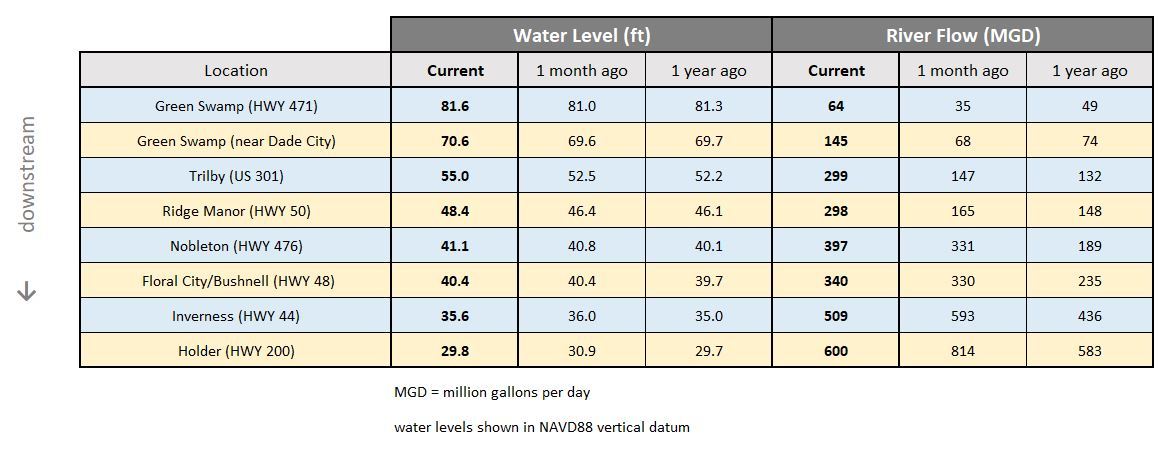
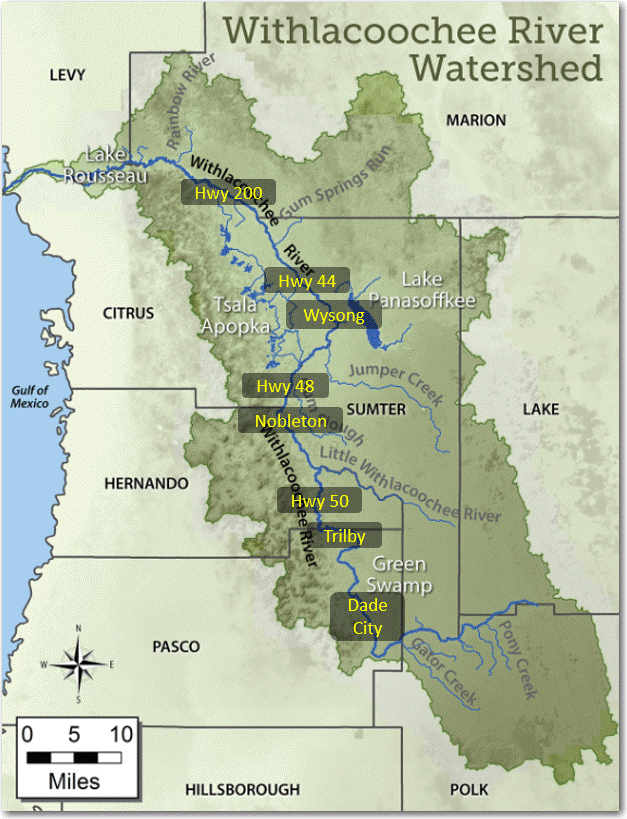
Withlacoochee River near Jumper Creek (November 2020)
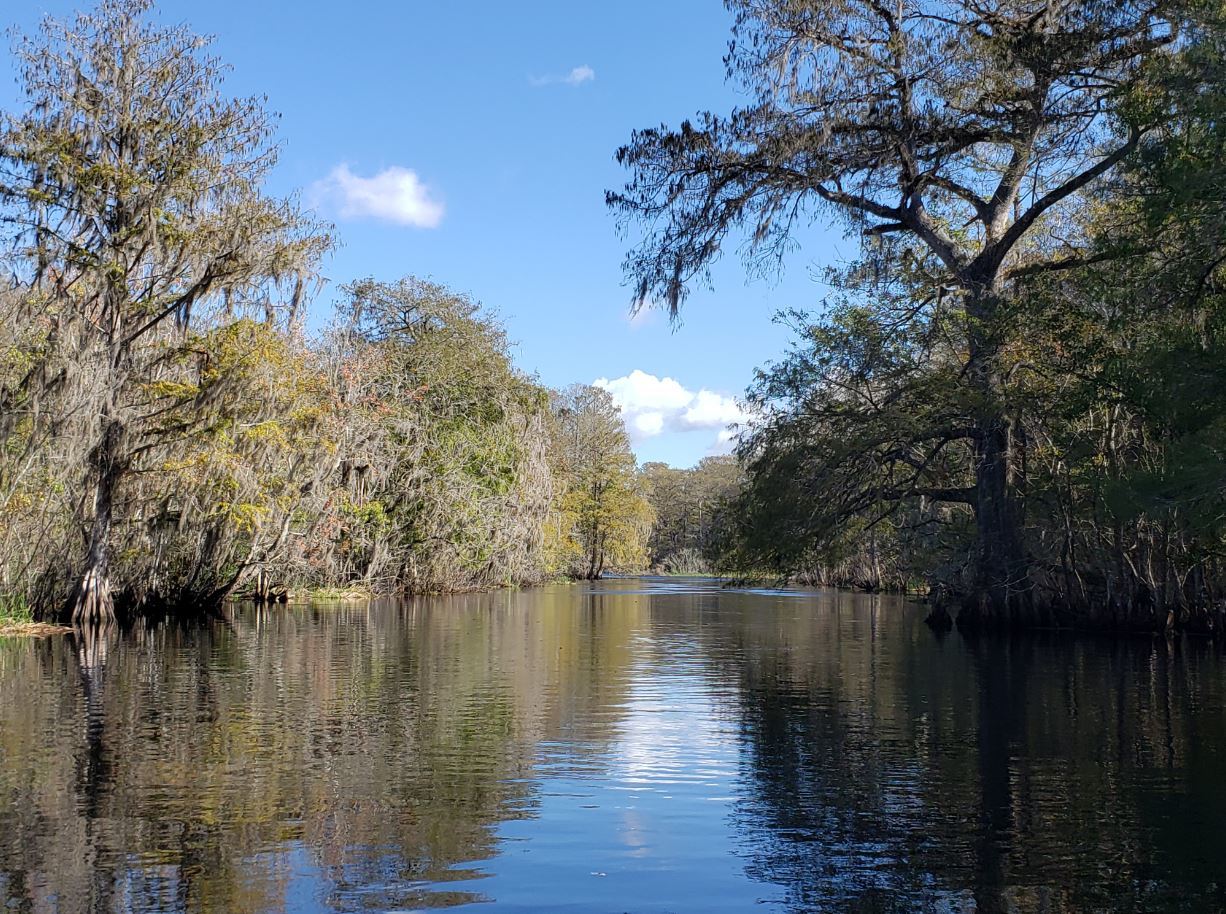
Tsala Apopka Chain of Lakes:
- Water levels throughout the Tsala Apopka lake chain dropped 1-2 inches during the month of November, which is normal for this time of year.
- The water control structures (aka “locks”) remain closed, helping to conserve water in the lakes/canals/swamps of this unique water body.
- Water levels are monitored daily for the major pools of the lake chain using real-time gauges that provide instantaneous data.
- In the coming weeks, we’ll be working towards installing real-time gauges on Lake Consuella and Lake Bradley in the southern portion of the lake chain.
- Currently, levels on these two lakes are measured weekly, so this increased frequency of data will allow for better structure operations.
- All three pools of Tsala Apopka are currently 6 inches higher than they were a year ago, and remain near their high guidance levels.

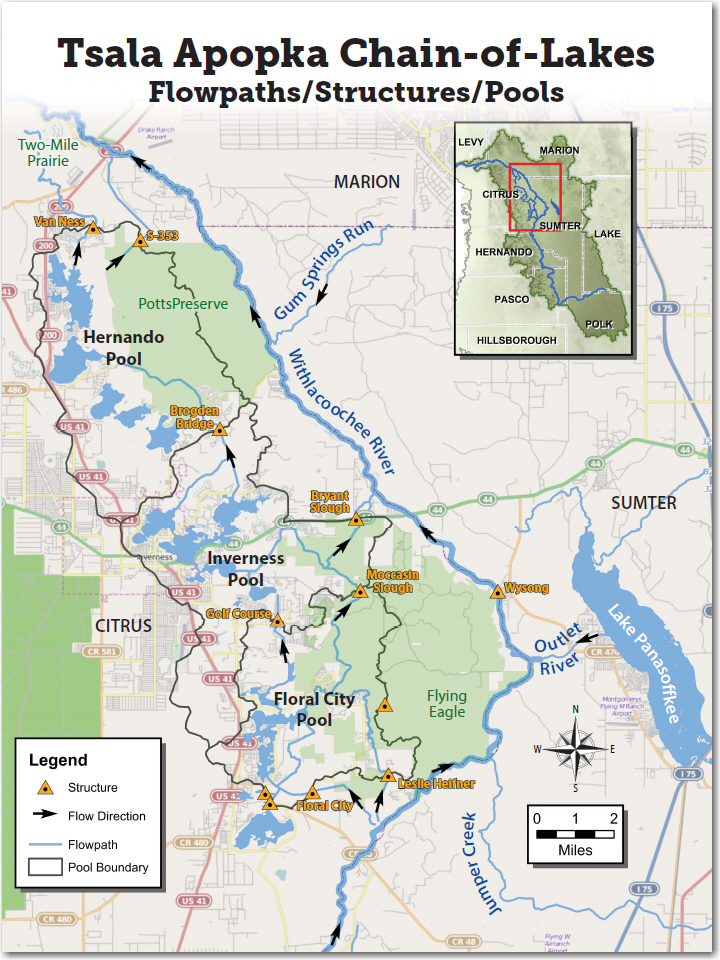
Lake Panasoffkee and Wysong:
- The water level on Lake Panasoffkee dropped about 4 inches in November.
- Lake levels rise and fall due to changes in inflows to the lake and outflow to the Withlacoochee River.
- Currently the lake is the same level it was a year ago.
- Inflows to the lake from Little Jones Creek and Shady Brook are 21% higher than they were a month ago, thanks to November Rainfall in the adjacent swamps.
- Outflow from Lake Pan has declined by around 31% in over the past month, due to higher river levels from recent rains.
- The main gate of the Wysong structure remains partially raised, helping to conserve water immediately upstream.
- Wysong currently has little impact on Lake Panasoffkee water levels, since the lake is still quite a bit higher than the river.
- Both dissolved oxygen (8.6 mg/L) and sunlight penetration to the lake bottom (41%) are in good shape for this time of year.
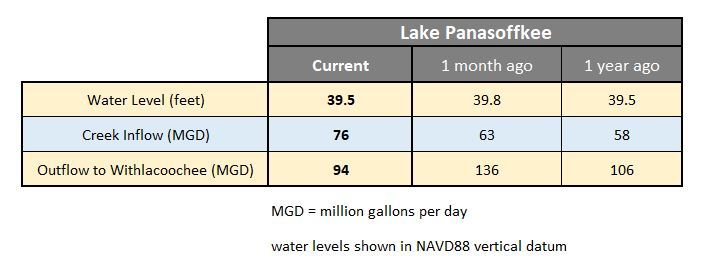
Minimal Impact of Wysong Structure (November 2020)
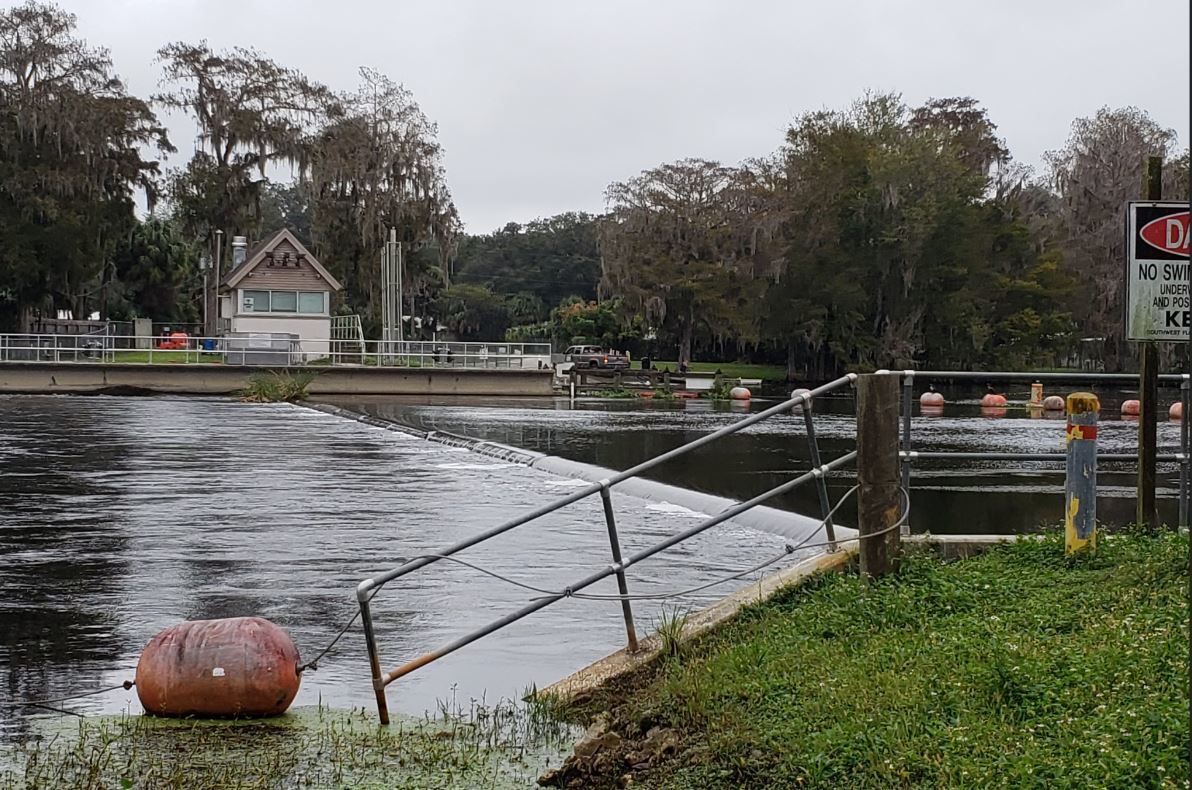
Lake Rousseau and the Lower Withlacoochee River (from Dunnellon to the Gulf of Mexico):
- Downstream from Dunnellon, the Withlacoochee River is influenced by water control structures on Lake Rousseau.
- There is currently 19% less flow entering Lake Rousseau compared to last month, but inflows are similar to what they were a year ago.
- Last Monday, a virtual meeting (hosted by WAR, Inc) provided some great information about Lake Rousseau and the Lower Withlacoochee River.
- One of the topics related to a potential drawdown of Lake Rousseau for environmental reasons.
- This was strictly an informational presentation requested by the citizen group (WAR).
- At this time, there are no realistic plans to conduct a drawdown on Lake Rousseau. Such an action would require much more investigation, public buy-in, a large monetary investment and a favorable cost/benefit ratio.

- Outflows from Lake Rousseau have decreased by about 18% over the past month.
- All of the flow currently leaving Lake Rousseau is passing through the Inglis Bypass Spillway into the Lower Withlacoochee River.
- The Inglis Main Dam is now closed and won’t be re-opened until inflows to the lake increase again.

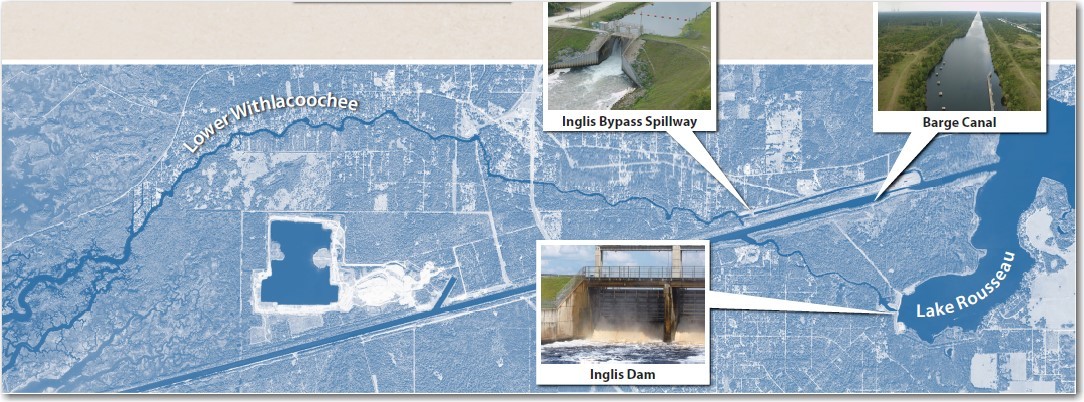
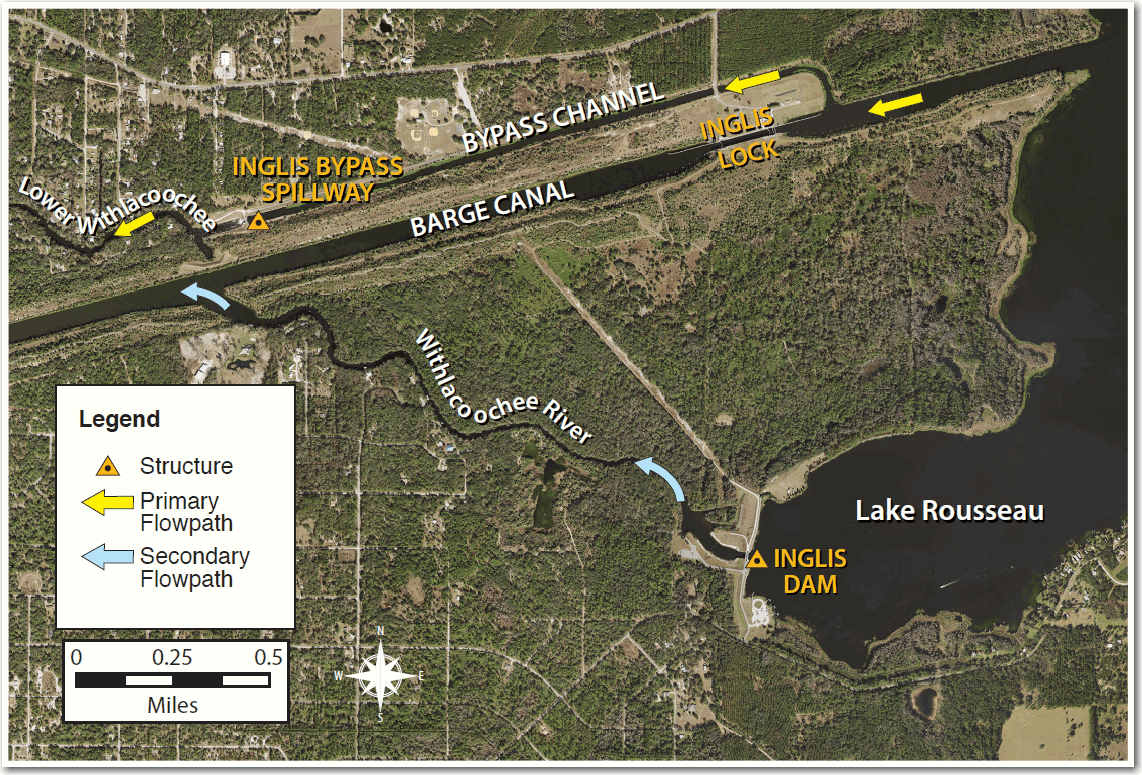
Have a great week and stay warm!
Mark
Mark Fulkerson, Ph.D., P.E.
Chief Professional Engineer
Water Resources Bureau
Southwest Florida Water Management District
(352) 796-7211, ext. 4410
(800) 423-1476 (FL only)
(352) 279-4493 (cell)

